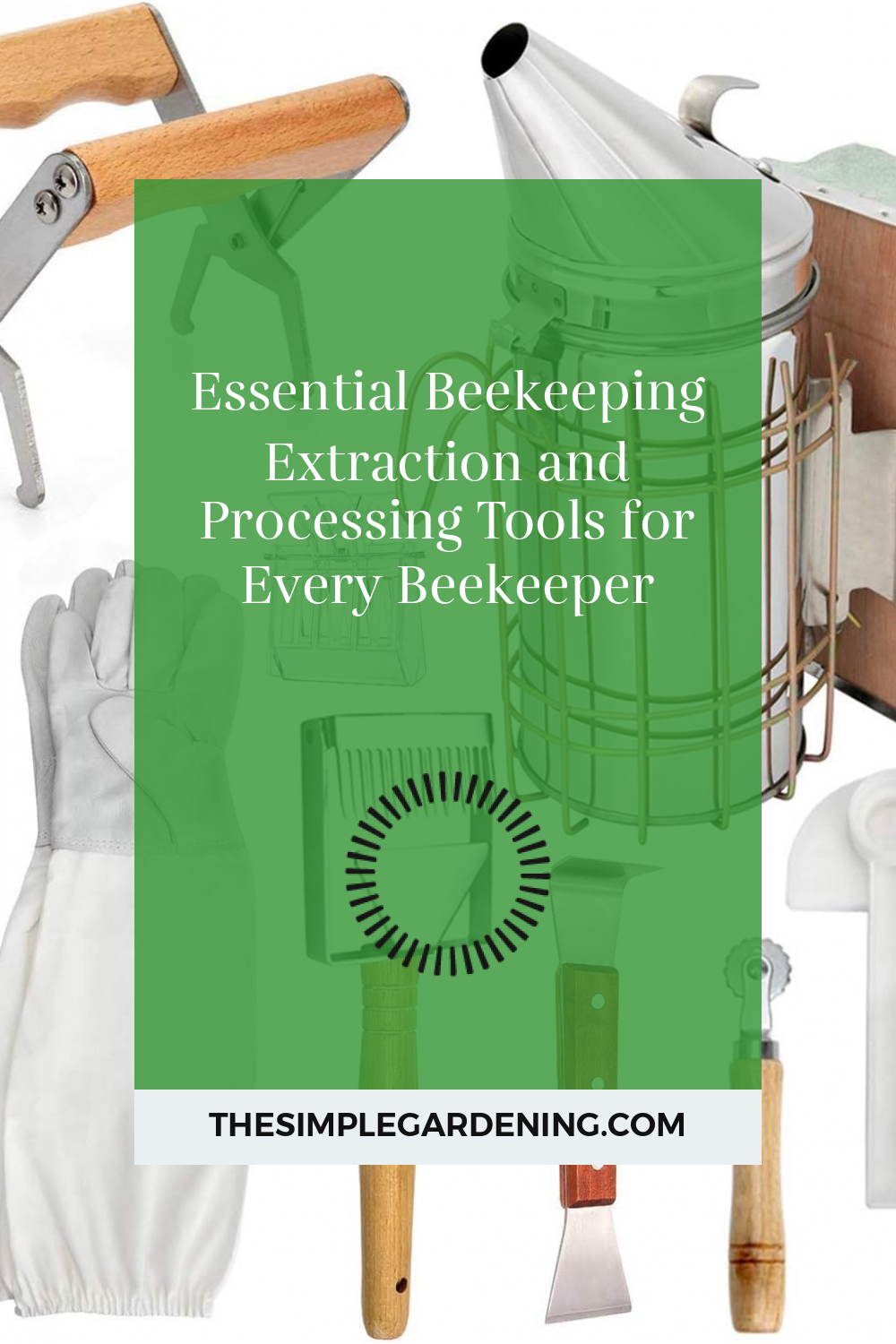Beekeeping extraction and processing tools are essential for anyone serious about harvesting honey and other bee products. Whether you’re a hobbyist or a commercial beekeeper, having the right tools can make the difference between a smooth operation and a sticky mess.
What is Beekeeping Extraction and Processing?
Definition: Beekeeping extraction and processing involve the removal and preparation of honey and other bee products from the hive for consumption and sale.
Importance: These processes ensure honey purity, maintain product quality, and maximize yield. Proper tools and techniques help avoid contamination and preserve the natural benefits of honey and other bee products.
Historical Overview
Traditional Methods: Early beekeeping relied on simple tools like knives and sieves to extract honey. These methods were labor-intensive and less efficient.
Modern Advances: Technology has revolutionized honey extraction and processing with innovations like centrifugal extractors and automated uncapping machines, making the process faster and more efficient.
Essential Beekeeping Extraction Tools
Honey Extractors
Honey extractors are vital for efficiently extracting honey from the combs without destroying them.
Types of Extractors:
| Type of Extractor | Description | Advantages | Disadvantages |
|---|---|---|---|
| Manual Extractors | Operated by hand, suitable for small-scale operations. | Affordable and easy to use. | Labor-intensive. |
| Electric Extractors | Powered by electricity, ideal for larger-scale beekeeping. | Fast and efficient. | More expensive. |
Centrifugal Extractors: These use centrifugal force to extract honey, minimizing comb damage and increasing efficiency.
Radial vs. Tangential Extractors:
| Extractor Type | Description | Best For |
|---|---|---|
| Radial Extractors | Honeycombs placed radially, honey extracted from both sides simultaneously. | High efficiency, large-scale beekeeping. |
| Tangential Extractors | Honeycombs placed tangentially, honey extracted one side at a time. | Smaller operations, hobbyists. |

Source Image: www.aliexpress.com
Uncapping Tools
Before honey extraction, the wax cappings need to be removed from the honeycomb.
Uncapping Knives: These come in hot and cold varieties. Hot knives are heated to make the process easier, while cold knives rely on manual effort.
Uncapping Forks: Ideal for small-scale operations, these are handheld tools used to scrape off wax cappings.
Uncapping Machines: Automated solutions for larger beekeeping operations, these machines speed up the uncapping process significantly.
Strainers and Filters
After extraction, honey needs to be filtered to remove impurities.
Basic Strainers: Simple mesh strainers are used for initial filtering.
Advanced Filters: Fine filters are used to remove smaller particles and ensure the highest quality honey.
Honey Settling Tanks
Settling tanks allow air bubbles and impurities to rise to the top and be removed, resulting in clear honey.
| Settling Tank Type | Description | Capacity |
|---|---|---|
| Small Tanks | Suitable for hobbyists and small-scale beekeepers. | Up to 50 liters. |
| Medium Tanks | For medium-scale operations. | 50-200 liters. |
| Large Tanks | Ideal for commercial beekeepers. | 200+ liters. |
Processing Equipment
Honey Bottling Machines
Bottling machines simplify the process of transferring honey into jars or bottles.
Manual Bottlers: Suitable for hobbyists and small-scale beekeepers, these require manual operation but are affordable and easy to use.
Automatic Bottling Machines: For large-scale commercial operations, these machines automate the bottling process, saving time and labor.
Wax Processing Tools
Beeswax is another valuable product of beekeeping. Proper tools are necessary for processing it.
Wax Melters: Available in various sizes, these melt wax efficiently.
Wax Presses: Used to extract residual honey from wax cappings.
Wax Molds and Foundation Makers: These tools create beeswax products and foundation sheets for hives.
Pollen Processing Tools
Pollen is a nutritious bee product that requires proper tools for collection and processing.
Pollen Traps: Collect pollen from bee colonies without harming the bees.
Pollen Dryers: Ensure proper preservation and storage of pollen by removing moisture.
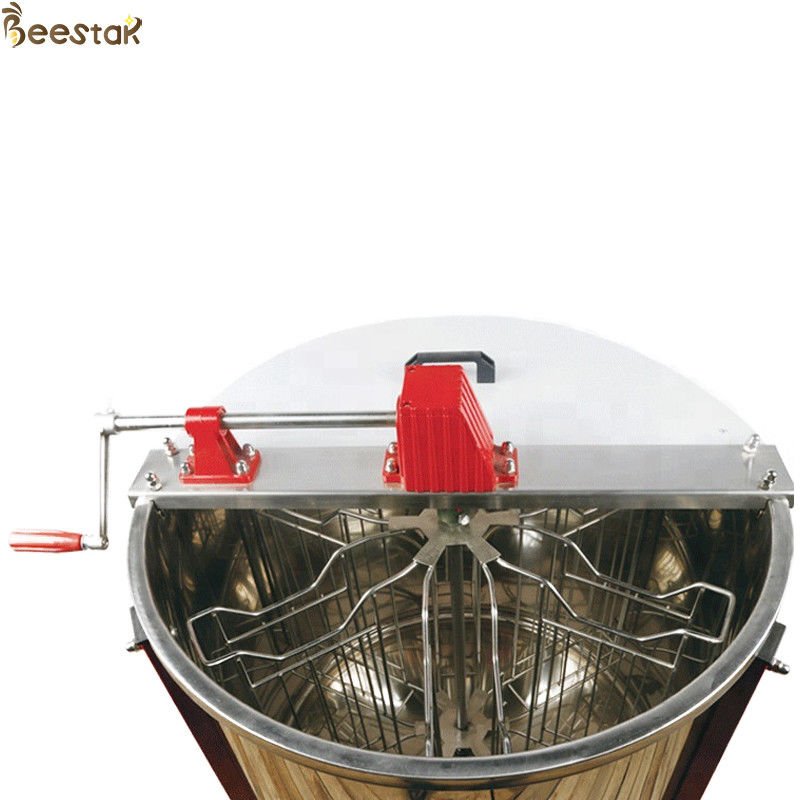
Source Image: www.bee-keepingequipment.com
Specialized Beekeeping Tools
Propolis Collectors
Propolis, a resinous substance collected by bees, has various uses in natural medicine.
Types of Collectors:
| Collector Type | Description | Advantages |
|---|---|---|
| Mesh Collectors | Simple mesh screens placed at the hive entrance. | Easy to use and affordable. |
| Plastic Collectors | Durable and efficient for collecting propolis. | Long-lasting and effective. |
Processing Propolis: After collection, propolis needs to be cleaned and prepared for use. This involves removing debris and possibly dissolving in alcohol for tinctures.
Royal Jelly Harvesting Tools
Royal jelly is a highly nutritious substance produced by worker bees.
Queen Cells: Special techniques are used to encourage bees to produce royal jelly in queen cells.
Jelly Extraction: Specialized tools are required to carefully extract royal jelly without contamination.
Bee Venom Collectors
Bee venom is used in various medicinal applications.
Venom Collection Boards: Safe and efficient methods to collect venom without harming the bees.
Processing Venom: Proper handling and storage are crucial to maintain the potency of bee venom.
Honey Quality Control Tools
Refractometers
Refractometers measure the moisture content of honey, ensuring it meets quality standards.
| Moisture Content Range | Honey Quality | Use Case |
|---|---|---|
| 16-18% | Optimal | Best for long-term storage. |
| 18-20% | Acceptable | Shorter shelf life. |
| Above 20% | Too high | Risk of fermentation. |
pH Meters
Monitoring the acidity of honey is essential for quality assurance.
Importance: Honey with the right pH level prevents spoilage and ensures a pleasant taste.
Calibration and Maintenance: Regular calibration and maintenance keep pH meters accurate and reliable.
Honey Color Grading
Color grading tools classify honey based on its color, which can indicate its floral source and quality.
Color Grading Tools: Colorimeters provide objective measurements of honey color.
Standards and Practices: Industry standards ensure consistency in honey grading.
Safety and Hygiene in Beekeeping Extraction
Protective Gear
Wearing the right protective gear is crucial for safe honey extraction.
Bee Suits and Gloves: Full-body suits and gloves protect against bee stings.
Veils and Helmets: These protect the face and head, which are particularly vulnerable.
Sanitation Practices
Maintaining cleanliness during extraction and processing prevents contamination.
Cleaning Tools and Equipment: Regular cleaning with appropriate sanitizers ensures tools remain hygienic.
Storage and Handling: Proper storage and handling of honey and other bee products maintain their quality.

Source Image: www.amazon.co.uk
Innovations in Beekeeping Extraction Tools
Smart Beekeeping Devices
Technological advancements have introduced smart devices to beekeeping.
Digital Monitors: These devices track hive conditions and honey production, providing valuable data to beekeepers.
Automated Extractors: Innovations in honey extraction technology make the process more efficient and less labor-intensive.
Sustainable Practices
Sustainability is becoming increasingly important in beekeeping.
Eco-Friendly Tools: Using sustainable materials and methods reduces the environmental impact.
Energy-Efficient Equipment: Modern equipment is designed to be energy-efficient, reducing the carbon footprint of beekeeping operations.
DIY Beekeeping Tools
Homemade Extractors
Creating your own beekeeping tools can be a cost-effective solution.
Designs and Plans: There are many plans available for building DIY honey extractors.
Materials and Tools Needed: Common materials include food-grade plastic barrels, metal rods, and simple gears.
DIY Uncapping Stations
An uncapping station can be built at home to suit your specific needs.
Building Your Own: Simple methods for creating an uncapping station include using wooden frames and mesh screens.
Customizing for Needs: Designs can be adjusted for different scales of operation.
Troubleshooting and Maintenance
Common Extraction Issues
Even with the best tools, issues can arise during honey extraction.
Foaming Honey: Causes include overheating and improper handling. Solutions involve adjusting temperatures and gentle handling.
Clogged Filters: Preventing and resolving filter blockages ensures smooth honey processing.
Equipment Maintenance
Regular maintenance keeps tools in optimal condition.
Routine Checks: Regularly checking and cleaning equipment prevents breakdowns.
Repairing Tools: DIY fixes for common equipment problems can save time and money.
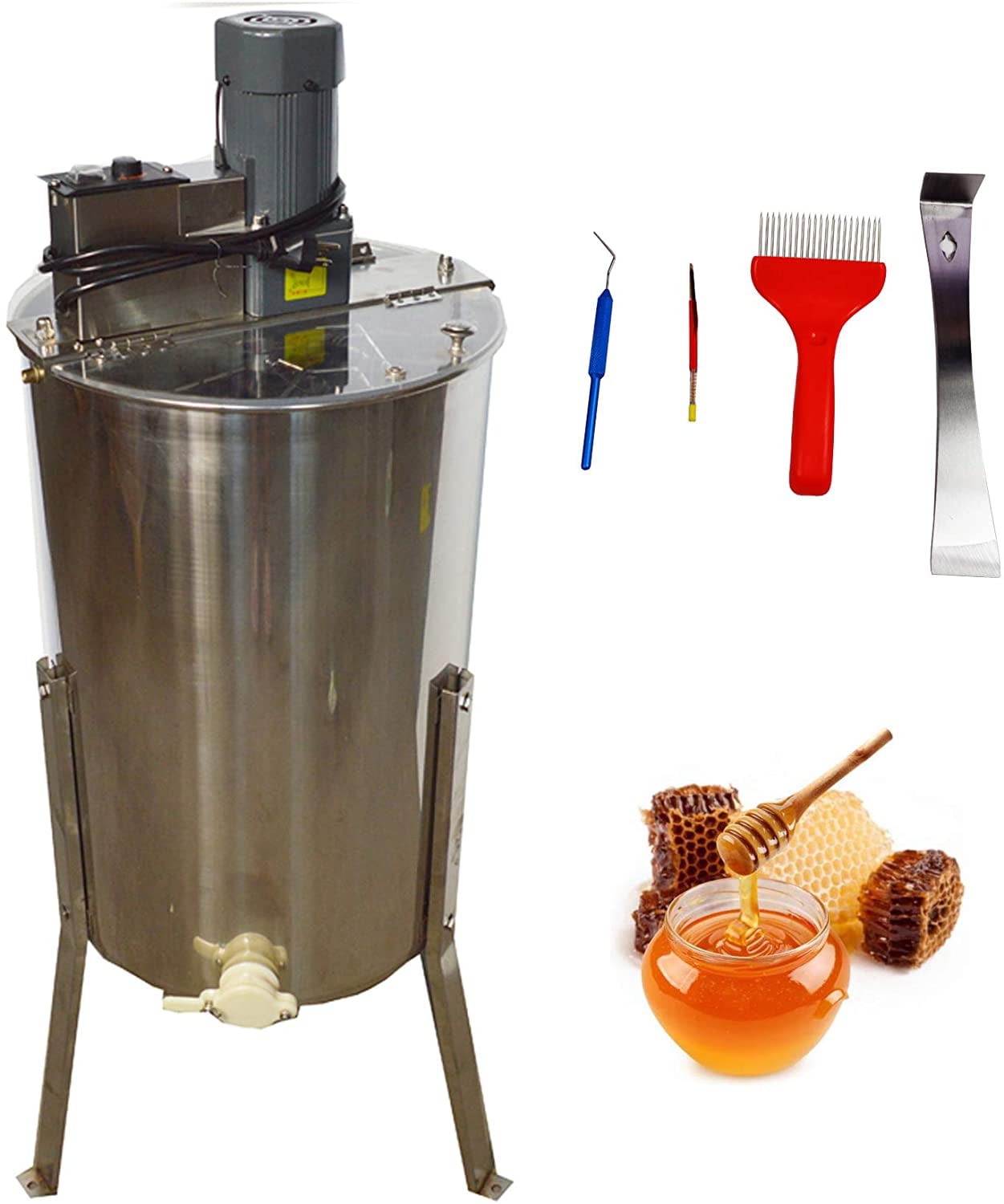
Source Image: www.walmart.com
Beekeeping Extraction and Processing Tools
Case Studies and Real-Life Applications
Small-Scale Beekeeping Operations
Success Stories: Learn from small-scale beekeepers who manage extraction and processing efficiently.
Tools and Techniques: Discover the preferred tools for hobbyist beekeepers and how they are used effectively.
Commercial Beekeeping Enterprises
Large-Scale Operations: Insights into commercial honey production and the challenges faced.
Advanced Tools: Explore the equipment used by professional beekeepers to maintain efficiency and quality.
Educational and Training Resources
Beekeeping Workshops
Workshops offer hands-on learning experiences for beekeepers.
Local and Online Classes: Opportunities for skill development in beekeeping extraction and processing.
Hands-On Training: Practical sessions that provide real-world experience.
Recommended Reading
Books and Manuals: Essential reading for aspiring beekeepers to deepen their knowledge.
Online Resources: Websites and forums offer a wealth of information and community support.
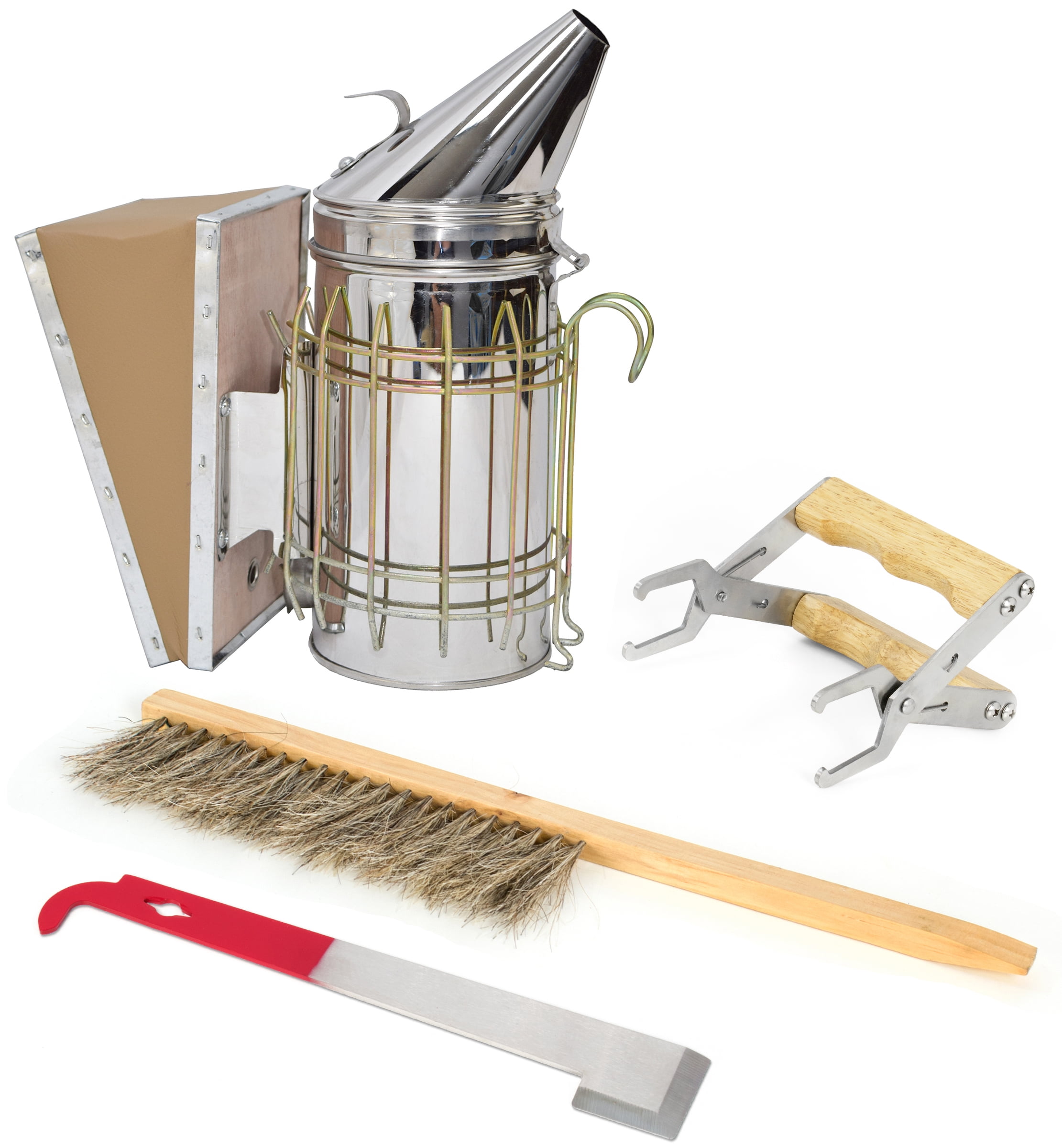
Source Image: love-and-i.com
Future Trends in Beekeeping Extraction
Technological Advances
Future tools and techniques in beekeeping are driven by technological innovations.
Automation and AI: Automated systems and artificial intelligence are set to revolutionize beekeeping.
Data-Driven Beekeeping: Using data to optimize extraction and processing ensures better yield and quality.
Environmental Impact
Sustainability is a key focus for the future of beekeeping.
Sustainable Practices: Innovations for eco-friendly beekeeping are crucial in the face of climate change.
Climate Change Adaptation: Adjusting techniques to new environmental conditions ensures the longevity of beekeeping practices.
Conclusion
Summary of Key Points
Review: Recap the essential tools and practices for beekeeping extraction and processing.
Encouragement: Motivating beekeepers to adopt best practices for quality honey production ensures continued success.
Additional Resources
Further Learning: Books, websites, and courses for deepening beekeeping knowledge.
Community Support: Joining beekeeping communities and associations offers support and shared knowledge.

Source Image: beebuilt.com
Beekeeping Extraction and Processing Tools
Frequently Asked Questions (FAQs)
Common Questions
| Question | Answer |
|---|---|
| What is the best type of honey extractor? | It depends on your scale; manual for small, electric for large. |
| How do I clean and maintain my beekeeping tools? | Regular cleaning with sanitizers and routine maintenance checks. |
| What are the signs of good quality honey? | Low moisture content, appropriate pH, clear and unadulterated. |
Expert Advice
Tips from Professionals: Insights from experienced beekeepers provide valuable guidance.
Best Practices: Proven methods for successful honey extraction and processing ensure optimal results.
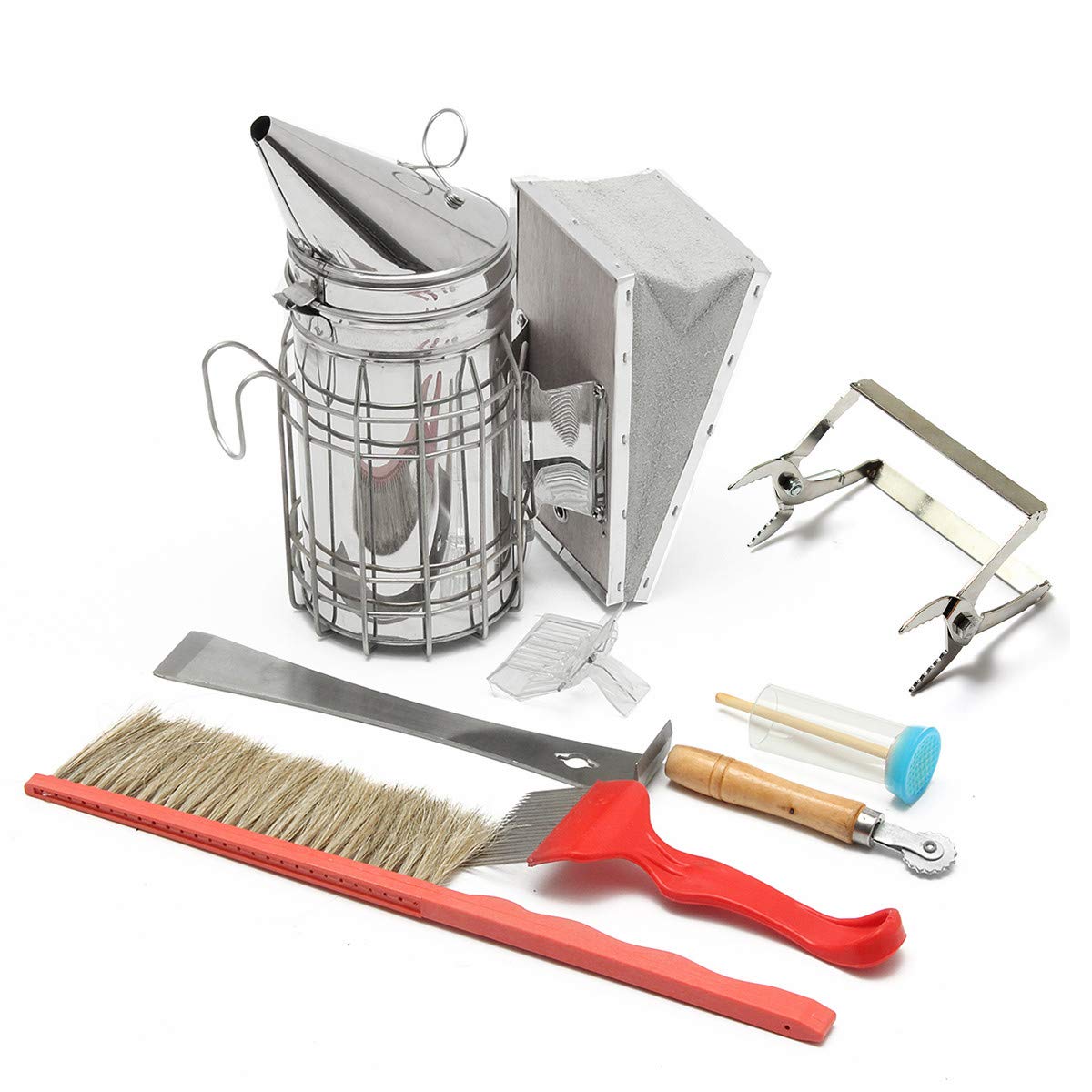
Source Image: www.amazon.co.uk

